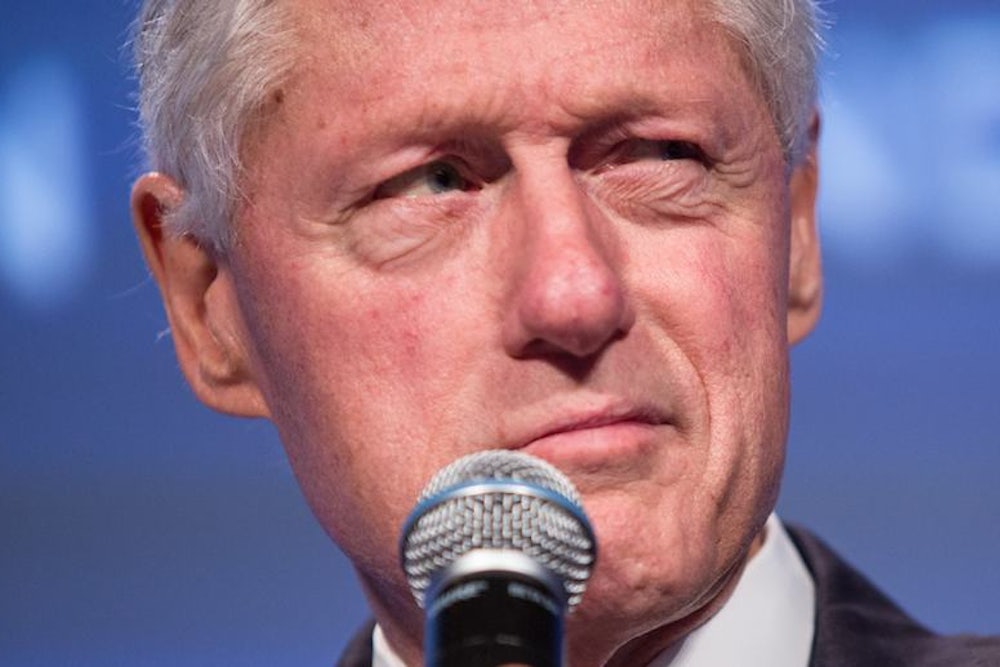The shooting at the Washington Navy Yard on Monday, which left 13 dead, including lone gunman Aaron Alexis, has sparked the usual contretemps (gun control vs. gun “rights”) and the usual conspiracy theories (Obama, basically). But the talking point taking firmest hold on the right is that the Navy Yard, where some 16,000 civilian and military personnel work, was left vulnerable because it’s a “gun-free zone”—and that it became gun free, as all domestic military installations did, due to a decree issued during the Clinton administration. Ergo...
“It hasn't always been the case that only MPs can carry firearms on U.S. military bases. A mere twenty years ago, ‘gun free zones’ made their way to these facilities under the watch of President Bill Clinton,” Breitbart’s Awr Hawkins wrote, citing a Washington Times editorial published in the wake of the 2009 Fort Hood shooting that argued for an end to the “Clinton-era military base gun ban.” “In other words, thanks to Clinton, citizens who join the military to use guns to defend liberty abroad cannot practice their constitutional right to keep and bear arms while on active duty at home.”
Citing the same editorial, Austin Peterson at the Libertarian Republic wrote, “[Alexis] was more equipped than the 12 people he killed on the base who were not permitted to carry weapons on the base thanks to former President Bill Clinton.”
The Right Rant put it even more bluntly: “If you want to blame somebody besides the Navy Yard shooter, blame Bill Clinton.”
But Clinton might not even be responsible for this “ban.” The Washington Times piece, the source of most (if not all) of this right-wing blame meme, states:
Among President Clinton’s first acts upon taking office in 1993 was to disarm U.S. soldiers on military bases. In March 1993, the Army imposed regulations forbidding military personnel from carrying their personal firearms and making it almost impossible for commanders to issue firearms to soldiers in the U.S. for personal protection. For the most part, only military police regularly carry firearms on base, and their presence is stretched thin by high demand for MPs in war zones.
I have called the Times’ managing editor for opinion, Richard Diamond, for comment, but the editorial almost certainly was referring to Army Regulation 190-14, which was issued on March 12, 1993, by the Department of the Army. [UPDATE: Diamond confirmed via email that 190-14 was the source for the excerpt above.] If the Times editorial board had taken the care to actually read that 14-page document, it would have realized that the impetus for the Army regulation was, in turn, Department of Defense directive 5210.56, which was issued on February 25, 1992, and was considered "effective immediately" for the Army, Navy, Air Force and Marines. Clinton, of course, did not take office until January 20, 1993. So if we’re going to blame a former president for a mass murder… see how ridiculous this all is?
What’s more, that directive—signed by Donald J. Atwood, George H. W. Bush’s deputy secretary of defense—was by no means a “ban” on firearms at military installations. It explicitly authorizes DOD personnel “to carry firearms while engaged in law enforcement or security duties, protecting personnel, vital Government assets, or guarding prisoners,” and simply aims to “limit and control the carrying of firearms by DoD military and civilian personnel. The authorization to carry firearms shall be issued only to qualified personnel when there is a reasonable expectation that life or DoD assets will be jeopardized if firearms are not carried. Evaluation of the necessity to carry a firearm shall be made considering this expectation weighed against the possible consequences of accidental or indiscriminate use of firearms.”
It’s also worth noting that Alexis’s first victim was a security guard who, in accordance with that DOD directive, was armed; proponents of gun control have used that fact to undermine the NRA's proposal for armed guards at all elementary schools. [UPDATE: This New York Times piece reports that the security guard was killed later on in the rampage.] Now, whether allowing anyone at the Navy Yard to carry guns would have prevented more deaths yesterday—or whether those deaths would have been more than offset by random gun deaths there over the years, both accidental and otherwise, owing to the prevalence of guns—is a separate debate entirely, and one I'll leave to television professionals:
Follow me at @rkearney
